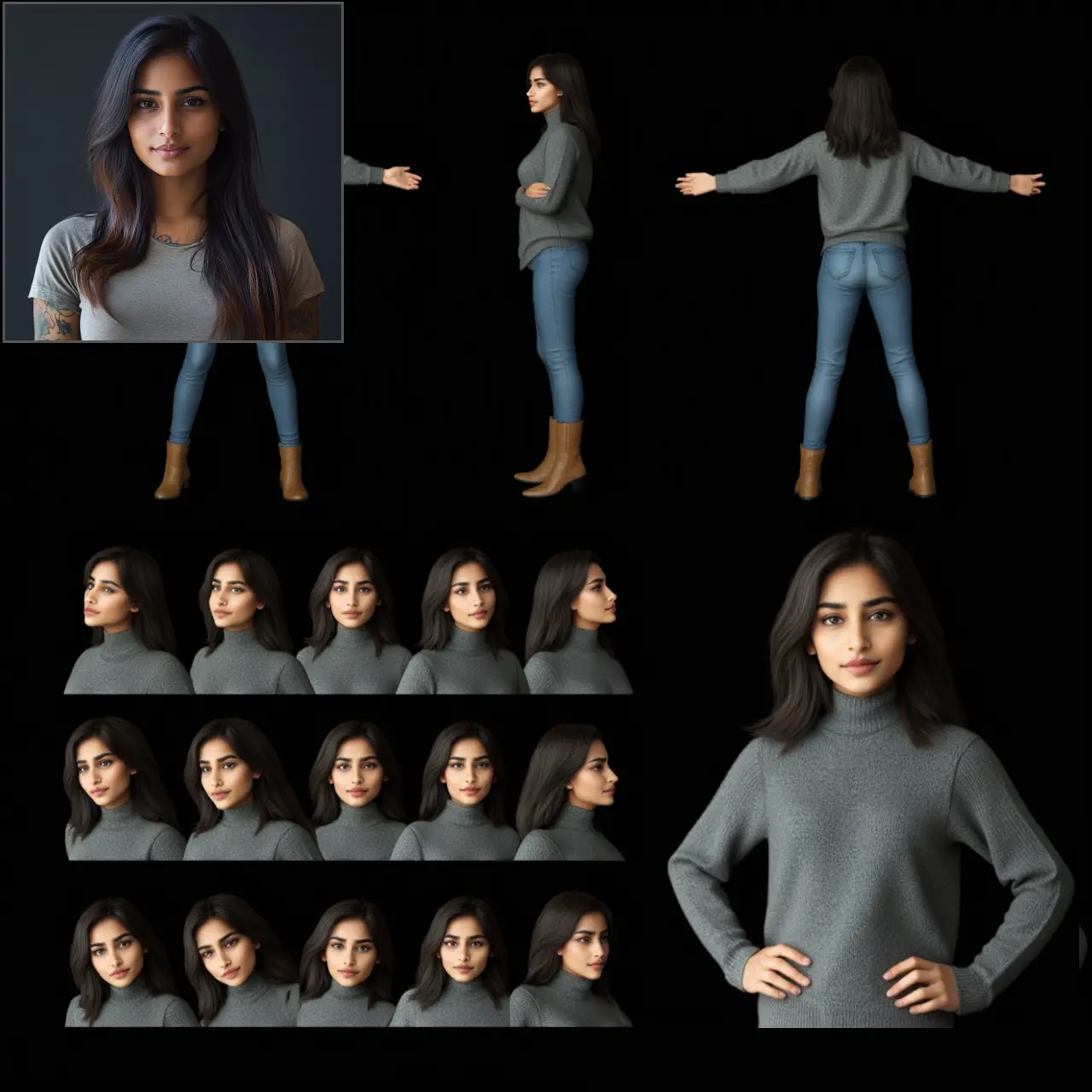ComfyUI Node: RF-Edit Double Layers Override
RFDoubleBlocksOverride
Categoryfluxtapoz
logtd (Account age: 407days) Extension
ComfyUI-Fluxtapoz Latest Updated
2025-01-09 Github Stars
1.22K
How to Install ComfyUI-Fluxtapoz
Install this extension via the ComfyUI Manager by searching for ComfyUI-Fluxtapoz- 1. Click the Manager button in the main menu
- 2. Select Custom Nodes Manager button
- 3. Enter ComfyUI-Fluxtapoz in the search bar
Visit ComfyUI Online for ready-to-use ComfyUI environment
- Free trial available
- 16GB VRAM to 80GB VRAM GPU machines
- 400+ preloaded models/nodes
- Freedom to upload custom models/nodes
- 200+ ready-to-run workflows
- 100% private workspace with up to 200GB storage
- Dedicated Support
RF-Edit Double Layers Override Description
Manage and configure boolean parameters for double-layer blocks in diffusion models, enabling fine-tuning and customization.
RF-Edit Double Layers Override:
The RFDoubleBlocksOverride node is designed to manage and configure a set of boolean parameters that control the behavior of double-layer blocks within a diffusion model. This node is part of the fluxtapoz category, which suggests its role in modifying or enhancing the functionality of models that utilize double-layer structures. By providing a structured way to override these layers, the node allows for fine-tuning and customization of the model's behavior, potentially leading to improved performance or tailored outputs. The primary goal of this node is to offer a straightforward mechanism for enabling or disabling specific layers, thereby granting you greater control over the model's processing pipeline.
RF-Edit Double Layers Override Input Parameters:
0
This parameter is a boolean input that determines whether the first double-layer block is active or not. The default value is False, meaning the layer is initially disabled. Enabling this layer can affect the model's processing by including the computations of this specific block.
1
Similar to the first parameter, this boolean input controls the activation of the second double-layer block. It also defaults to False, allowing you to selectively enable this layer as needed.
2
This parameter follows the same pattern, providing a boolean toggle for the third double-layer block. The default setting is False, and enabling it will incorporate this block's operations into the model's workflow.
3
This boolean input manages the fourth double-layer block, with a default value of False. Activating this layer can modify the model's behavior by including its specific computations.
4
This parameter controls the fifth double-layer block, defaulting to False. Enabling it allows the model to utilize the computations of this block.
5
This boolean input is for the sixth double-layer block, with a default setting of False. Activating this block can influence the model's output by incorporating its operations.
6
This parameter manages the seventh double-layer block, defaulting to False. Enabling it will include this block's computations in the model's processing.
7
This boolean input controls the eighth double-layer block, with a default value of False. Activating this layer can affect the model's behavior by including its specific operations.
8
This parameter is for the ninth double-layer block, defaulting to False. Enabling it allows the model to utilize the computations of this block.
9
This boolean input manages the tenth double-layer block, with a default setting of False. Activating this block can influence the model's output by incorporating its operations.
10
This parameter controls the eleventh double-layer block, defaulting to False. Enabling it allows the model to utilize the computations of this block.
11
This boolean input is for the twelfth double-layer block, with a default setting of False. Activating this block can influence the model's output by incorporating its operations.
12
This parameter manages the thirteenth double-layer block, defaulting to False. Enabling it will include this block's computations in the model's processing.
13
This boolean input controls the fourteenth double-layer block, with a default value of False. Activating this layer can affect the model's behavior by including its specific operations.
14
This parameter is for the fifteenth double-layer block, defaulting to False. Enabling it allows the model to utilize the computations of this block.
15
This boolean input manages the sixteenth double-layer block, with a default setting of False. Activating this block can influence the model's output by incorporating its operations.
16
This parameter controls the seventeenth double-layer block, defaulting to False. Enabling it allows the model to utilize the computations of this block.
17
This boolean input is for the eighteenth double-layer block, with a default setting of False. Activating this block can influence the model's output by incorporating its operations.
18
This parameter manages the nineteenth double-layer block, defaulting to False. Enabling it will include this block's computations in the model's processing.
RF-Edit Double Layers Override Output Parameters:
DOUBLE_LAYERS
The output of this node is a collection of boolean values representing the activation state of each double-layer block. This output is crucial for determining which layers are active and will be used in the model's processing pipeline. By understanding the configuration of these layers, you can better predict and control the model's behavior and output.
RF-Edit Double Layers Override Usage Tips:
- Experiment with enabling different combinations of double-layer blocks to see how they affect the model's output. This can help you find the optimal configuration for your specific task.
- Use this node in conjunction with other nodes in the
fluxtapozcategory to achieve more complex modifications and enhancements to your model.
RF-Edit Double Layers Override Common Errors and Solutions:
Invalid Boolean Value
- Explanation: This error occurs when a non-boolean value is provided for one of the layer parameters.
- Solution: Ensure that all input values are either
TrueorFalse.
Layer Index Out of Range
- Explanation: This error happens if you attempt to access a layer index that does not exist.
- Solution: Verify that you are only using indices between 0 and 18, as these are the valid range for this node.
RF-Edit Double Layers Override Related Nodes
RunComfy is the premier ComfyUI platform, offering ComfyUI online environment and services, along with ComfyUI workflows featuring stunning visuals. RunComfy also provides AI Playground, enabling artists to harness the latest AI tools to create incredible art.



